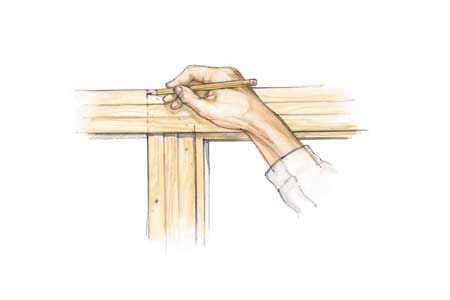Square casings are the decorative trim pieces that frame windows and doors, adding a finished look to your home’s interior. Depending on your preference, they can be simple (modern) or ornate (traditional).
In this guide, we explain how to cut your own trim and provide tips to help you achieve professional-looking results.
Trim Cutting Safety Precautions
Safety should always be a top priority when working with tools. To prevent accidents, wear safety glasses, hearing protection, and a dust mask. Ensure your work area is well-lit and free from clutter.
Be aware of your surroundings and keep children and pets away from the work area. Using the proper safety equipment and following best practices will minimize the risk of injury.
Tools for Cutting Trim
At minimum, you will need the following to cut trim:
- Hammer
- Miter box
- Miter saw
- Nails
Cutting trim without power tools is possible. However, if you have many casings to cut, the job will be a lot faster, easier, and more precise if you use power tools such as:
- Compound miter saw
- Circular saw
- Jigsaw
- Nail gun
A miter saw is particularly useful for cutting precise angles, while a jigsaw can help with intricate cuts or curves. A nail gun will speed up the installation process and give you a professional finish.
Cutting Trim for Square Casings: Step-By-Step
Follow these steps to cut trim for square casings effectively:
Cut the Vertical Piece
- Measure the height of the window or door frame.
- Add 1/4 inch to this measurement to allow for a reveal.
- Set your miter saw to a 45-degree angle.
- Cut one end of the vertical trim piece at a 45-degree angle.
- Measure from the long point of the cut to the desired length and mark.
- Cut the other end at a 45-degree angle in the opposite direction.
Cutting the Horizontal Piece
- Measure the width of the window or door frame.
- Add 1/2 inch to this measurement to account for the reveals on both sides.
- Set your miter saw to a 45-degree angle.
- Cut both ends of the horizontal trim piece at 45-degree angles, ensuring they mirror each other.
Dealing with Out-of-Square Frames
Unfortunately, window and door frames aren’t always perfectly square. To address this issue:
- Cut the top of the vertical piece of casing at a 45-degree angle and nail it in place, leaving a 1/4-inch reveal along the edge of the casing.
- Hold the horizontal piece of casing to the top of the frame, overlapping the miter on the first piece.
- Maintain a 1/4-inch reveal and mark where it meets the mitered cut behind it.
- Connect the two marks and cut the matching miter.
This technique allows you to adjust for slight imperfections in the frame’s squareness.
Tips for Achieving Professional-Looking Trim
To elevate the quality of your trim work, we recommend the following expert tips.
Maintain Consistent Reveals
A reveal is a small gap between the edge of the casing and the window or door frame. For a polished look, aim for a consistent 1/4-inch reveal around the entire frame.
Proper Nailing Technique
Use finish nails and a nail set to secure the trim:
- Place nails about 16 inches apart.
- Nail close to the edges to prevent splitting.
- Set nail heads slightly below the surface of the trim.
- Fill nail holes with wood putty and sand smooth.
For an even more seamless finish, you can use color-matched putty that blends with the trim, making the nail holes virtually invisible.
Troubleshooting Trim Cutting Issues
Even with careful planning, you may encounter some challenges when cutting trim for square casings.
Fixing Gaps in Miter Joints
If you notice small gaps in your miter joints:
- Try adjusting the angle slightly on your miter saw.
- Use wood filler to fill small gaps.
- For larger gaps, consider re-cutting the pieces.
You can fill in small gaps with an acrylic caulk and paint over it once it is dry to help hide any imperfections.
Addressing Warped or Bowed Trim
Warped or bowed trim can be challenging to work with. To address this:
- Select the straightest pieces of trim available.
- Use shims behind the trim to straighten it during installation.
- Consider using shorter pieces of trim to minimize bowing.
Prevent warping by storing your trim properly before installation. Keep the trim in a dry, flat area to maintain its integrity until you’re ready to use it.

